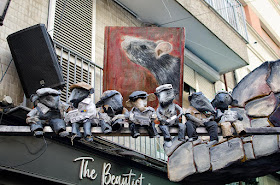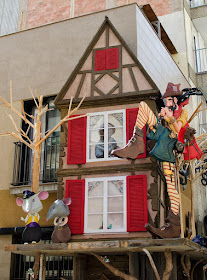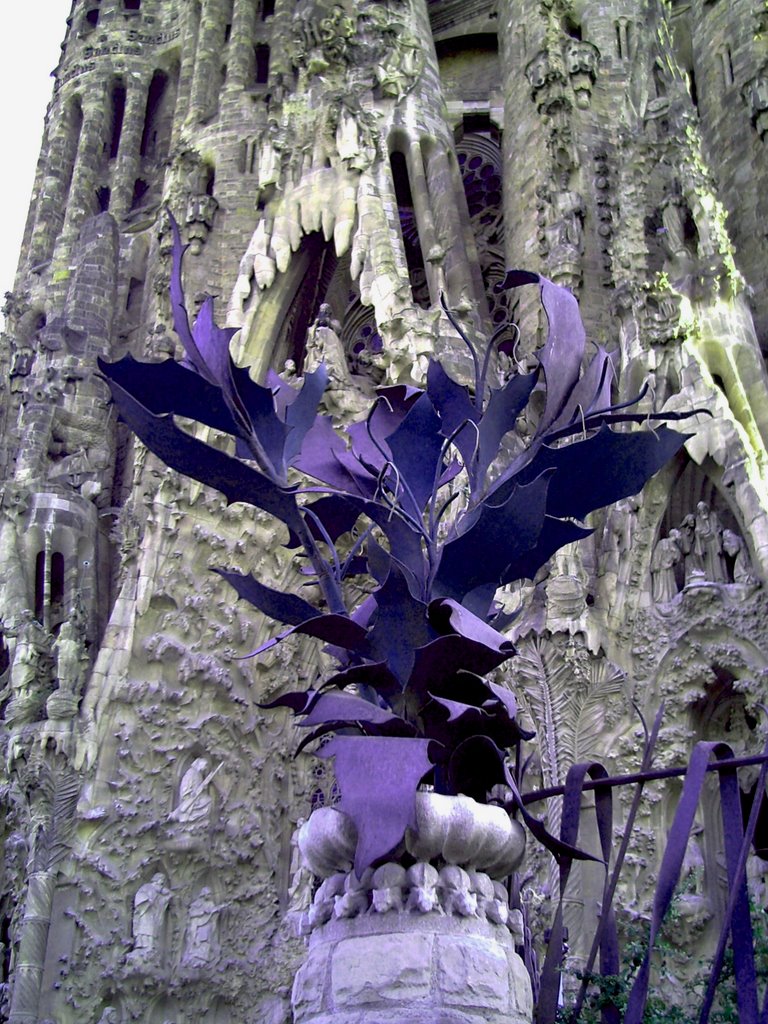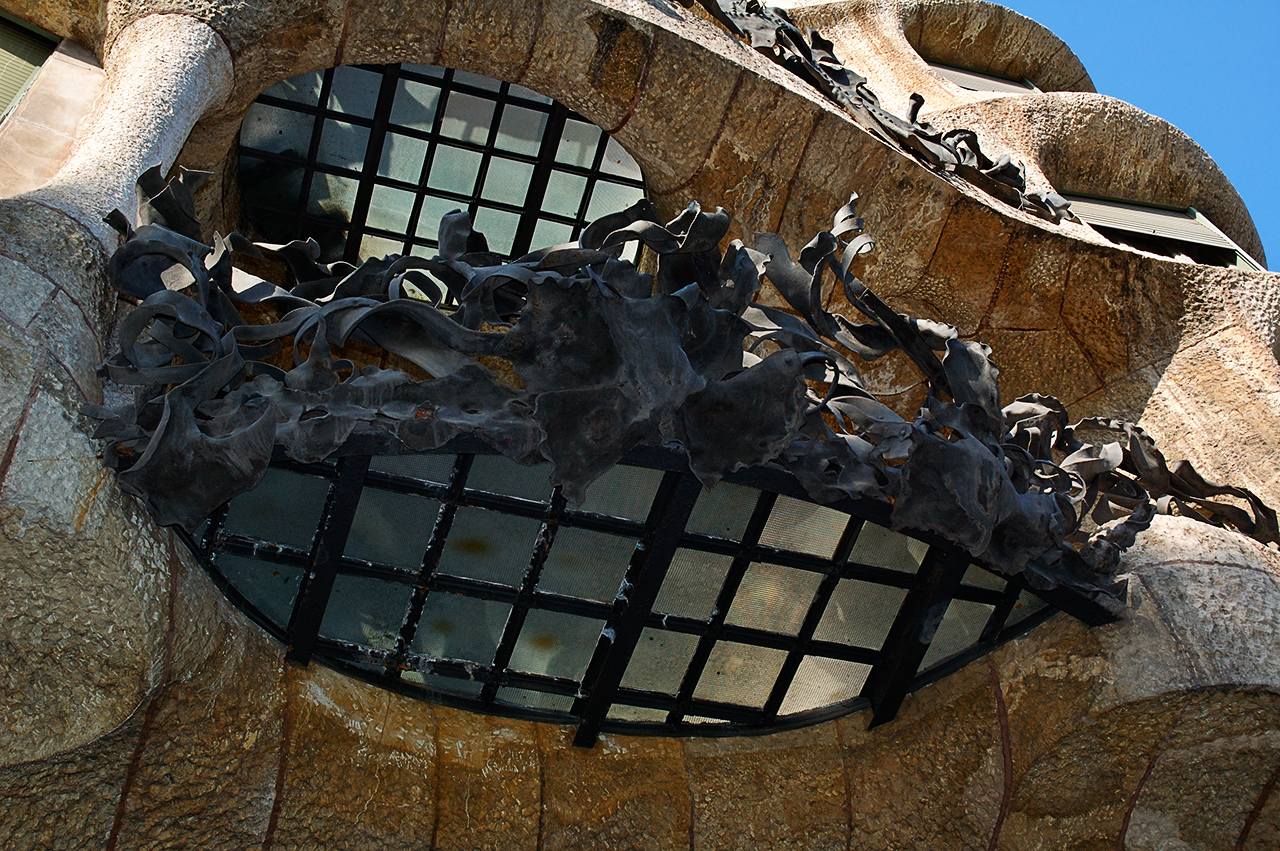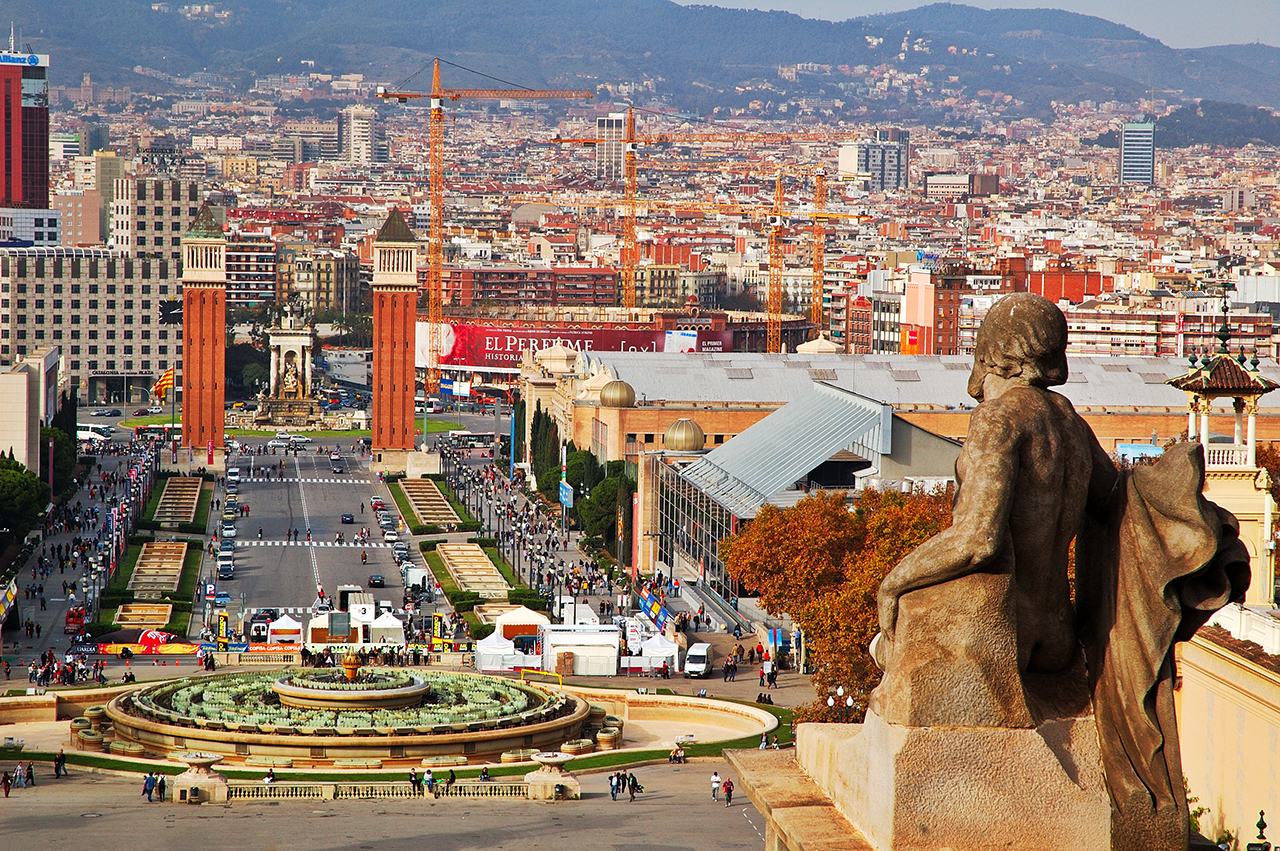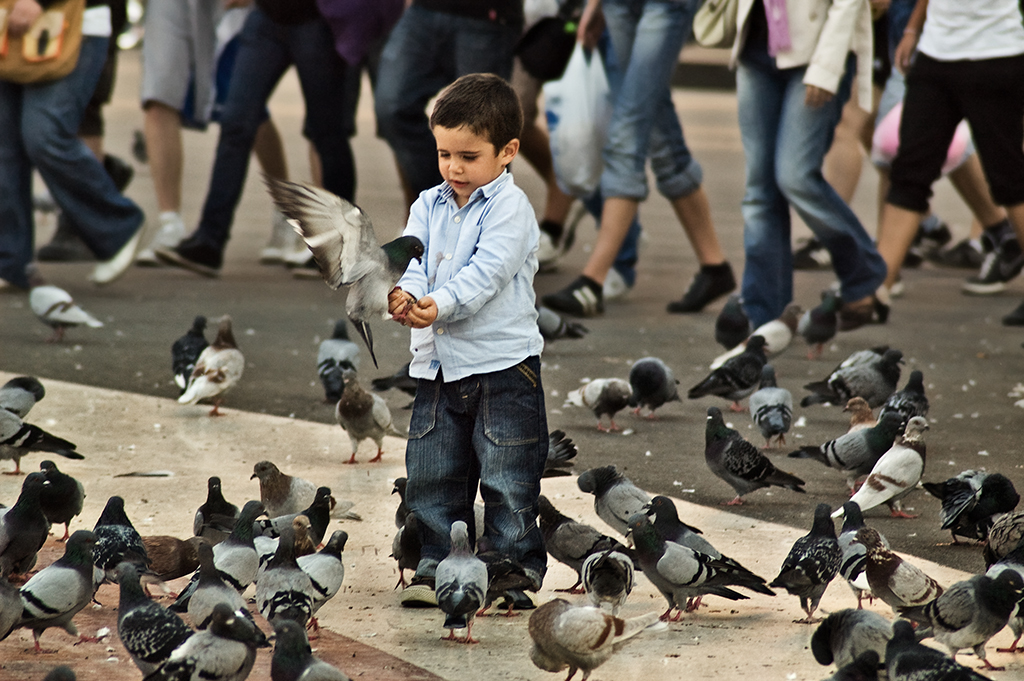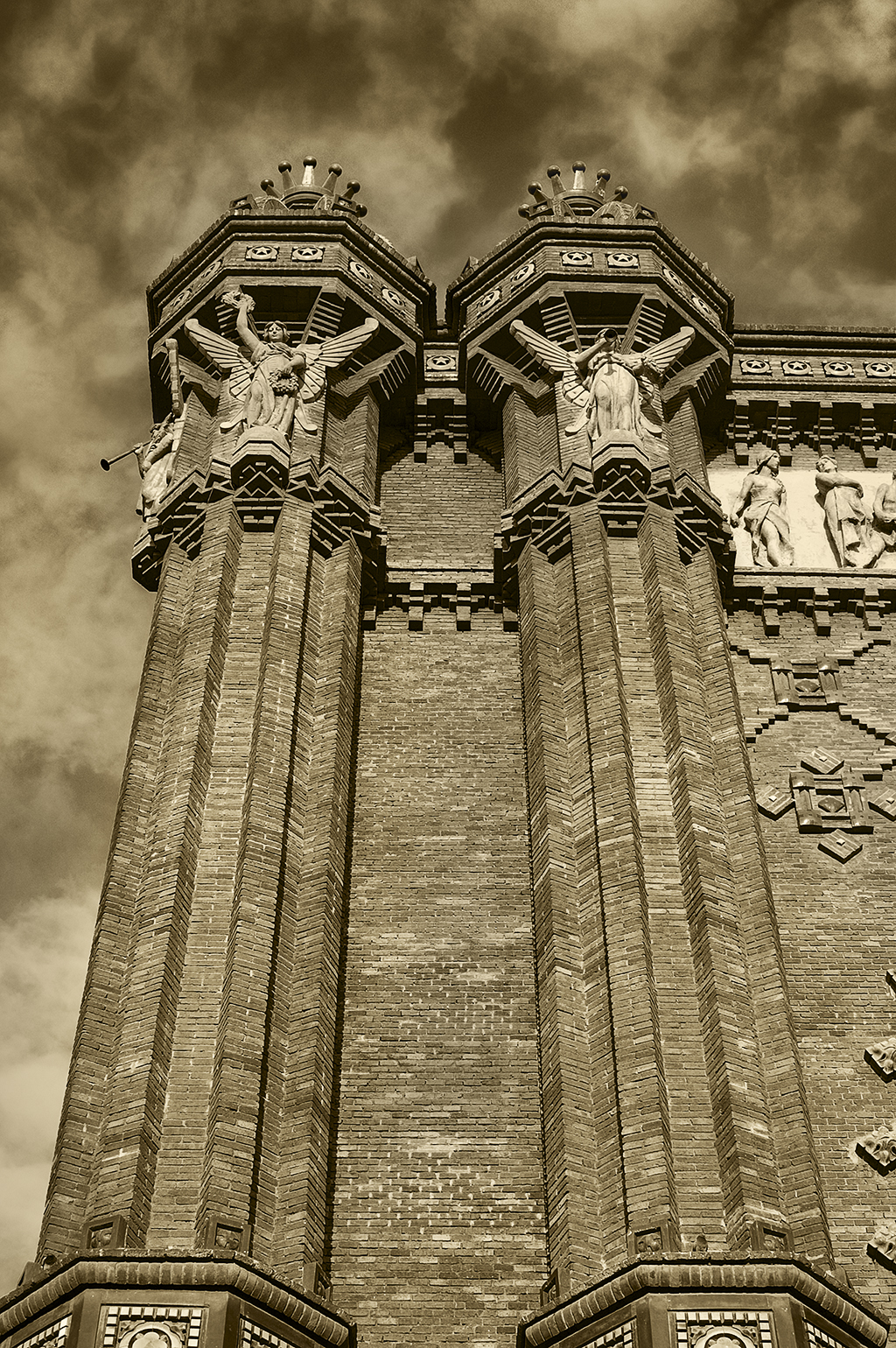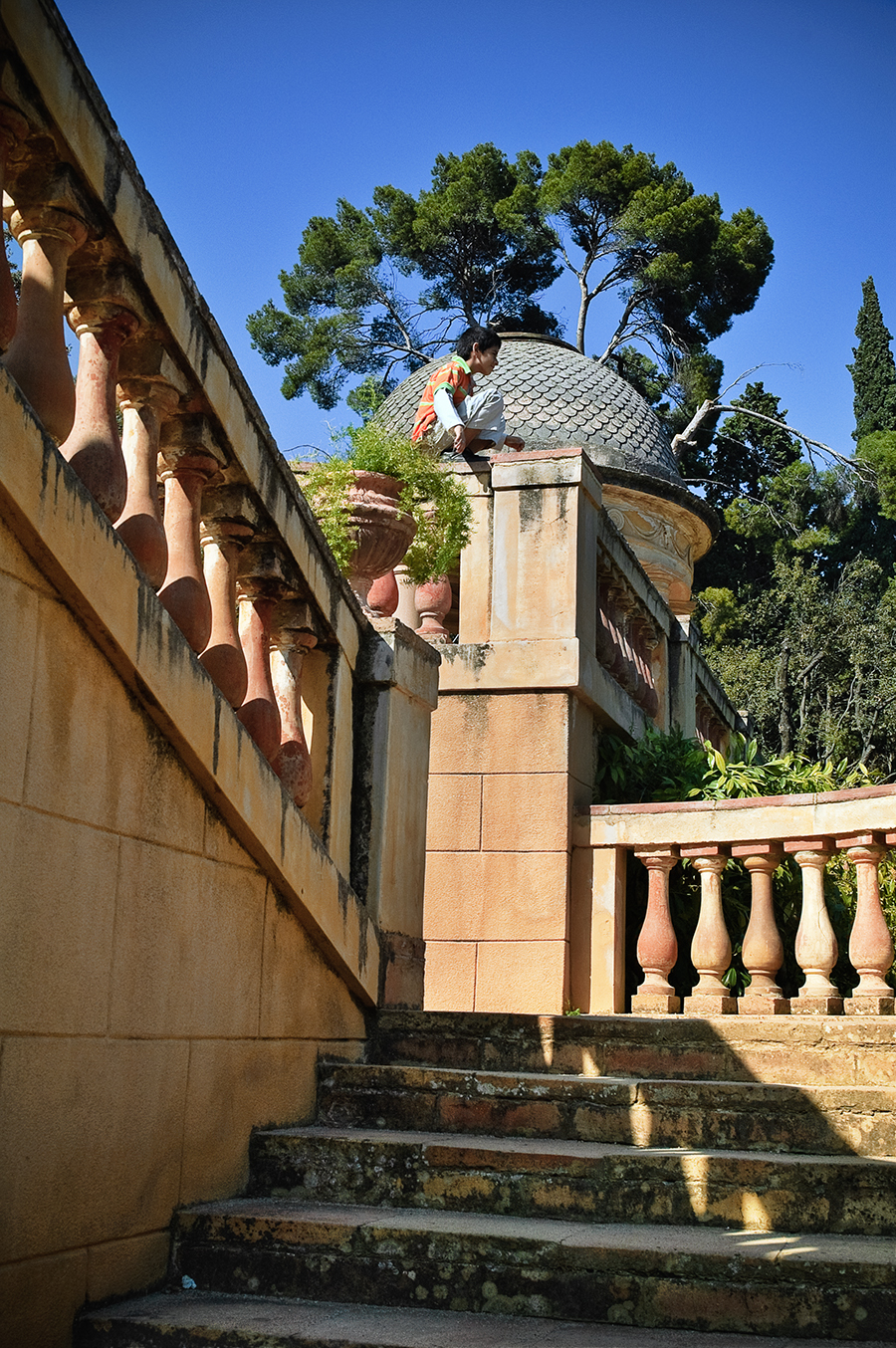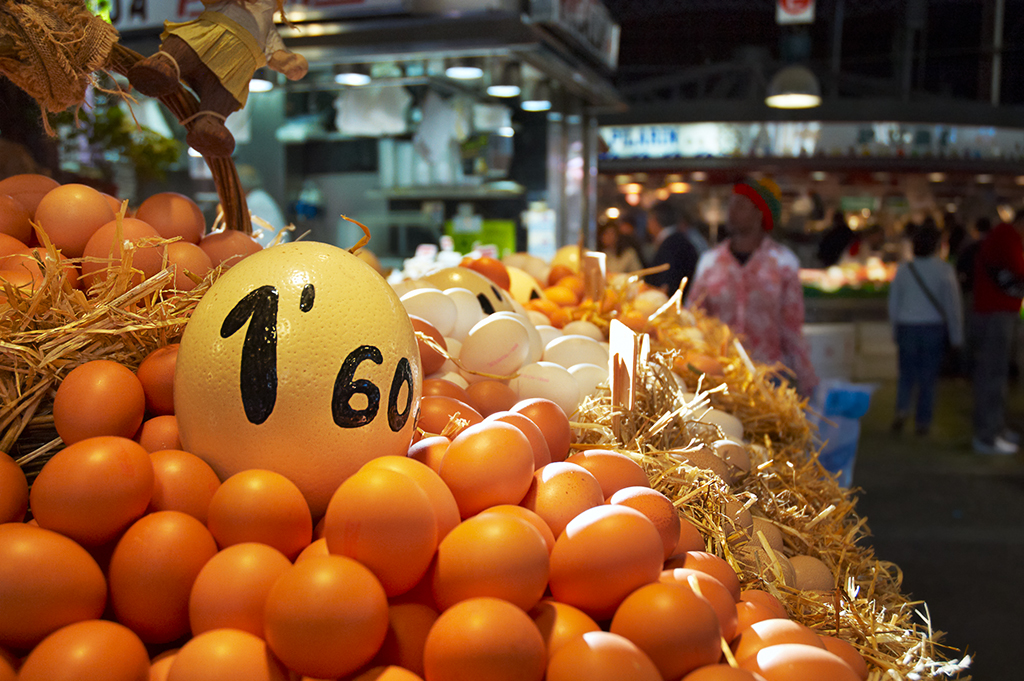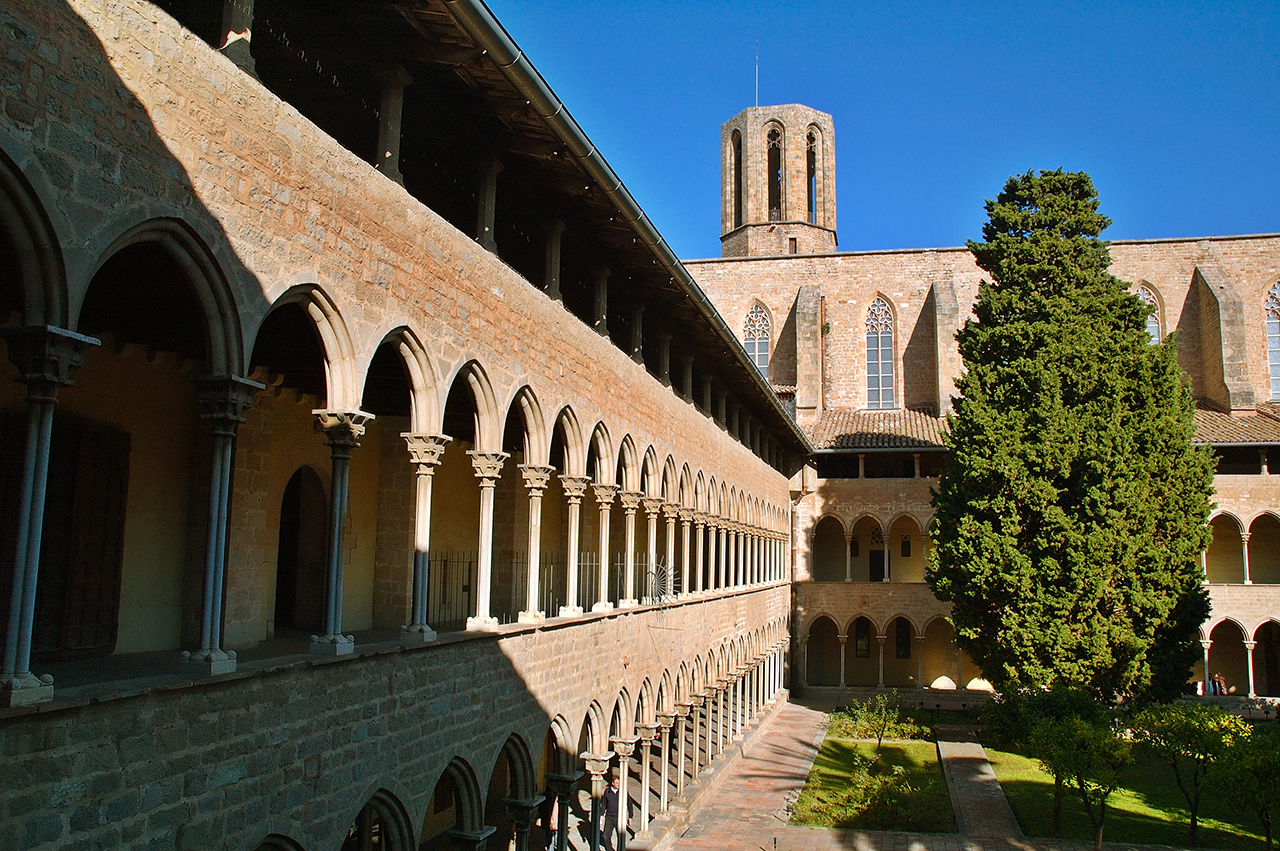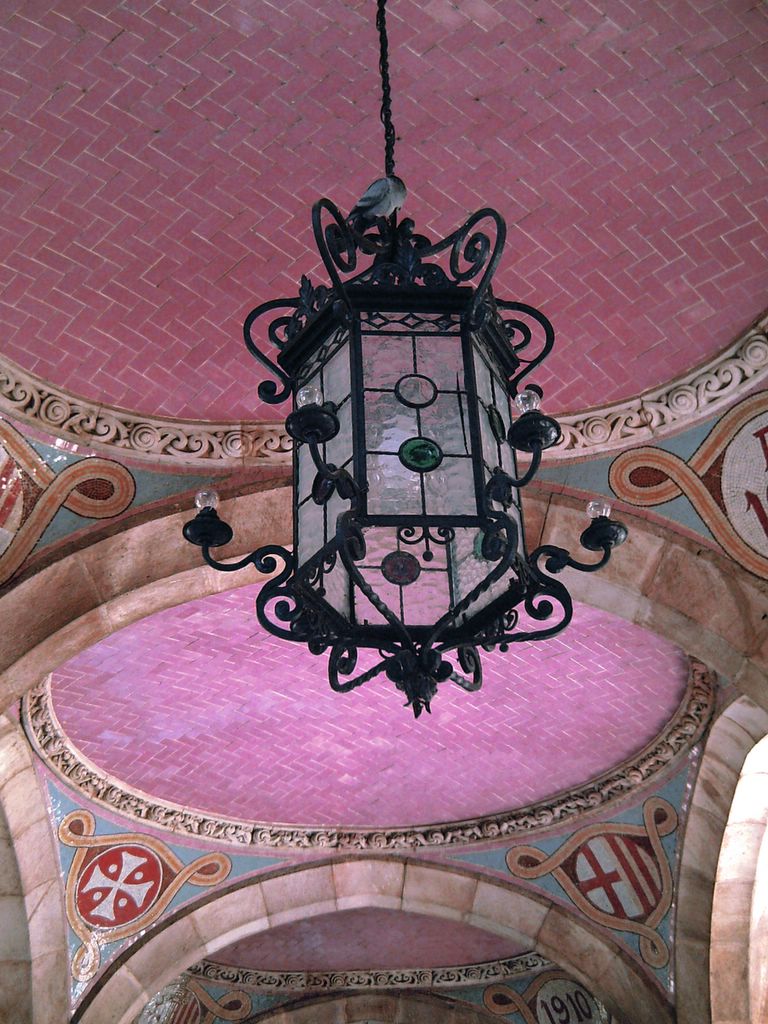The Festes de Gràcia, also known as the Festa Major de Gràcia, is the largest festival held each year in the charming neighborhood of Gràcia in Barcelona. Taking place for a week every August, this lively celebration brings together residents young and old through colorful street decorations, traditional Catalan dancing and music, delicious local cuisine, and a strong sense of community.
Origins and History
The Festes de Gracia is a popular neighborhood festival in Barcelona that traces its origins back to 1817. It began as a religious procession on August 15th to return an image of the Virgin Mary to a local convent after it had been hidden during the Peninsular War and in honor to the Feast of the Assumption of Mary. At the time, Gràcia was still its own independent town on the outskirts of Barcelona. After Gràcia was annexed into Barcelona in 1897 and over the next few decades, the festival became more focused on celebrating Catalan culture and community. It evolved into a week-long festival celebrated annually in August, with decorated streets, music, dance, theater, parades and more. By the early 20th century over 100 streets were decorated by local commissions. In 1935 attempts were made to organize the festival under one entity, but the Spanish Civil War interrupted this effort until 1956 when the Federation of Streets was formed to unite and organize the various celebrations. During the Franco dictatorship, when public use of the Catalan language and traditions was banned, the festival became an act of cultural resistance. Neighbors decorated streets with pro-independence symbols and sang banned Catalan songs. After dictatorship the festival flourished as an expression of Catalan culture and in 1997 was named a Traditional Festival of National Interest by the Catalan government. In 2009 the Federation became the Foundation of Festes de Gracia, focused on promoting the festival and Gracia culture. The Festes continues today as one of Barcelona's most popular events, bringing together neighbors to decorate streets and celebrate local heritage.
The Streets Come Alive
The most iconic part of Festes de Gràcia is the elaborate decorative displays along major streets and plazas. Local resident associations each select a theme and spend months preparing their street decorations, which are handmade from recycled materials. Past themes have ranged from under the sea to fairy tales to carnivals.
As you stroll through the decorated streets, you’ll feel fully immersed in these creative worlds. On Carrer de l’Or, you might believe you’re deep below the ocean thanks to paper fish dangling overhead. Wander down Carrer de Verdi, and you’ll think you’ve stepped into your favorite storybook or movie scene. It’s an incredible, ever-changing spectacle.
Some standout street decorations over the years include:
- 2017's Skiing station at Travessia de Sant Antoni was the best street contest winner with an 'icy' and elaborate stage
- In 2018, a rural farm full of animals gave the first prize to carrer Llibertat
- Carrer del Progrés, representing the magic world of Harry Potter, won the award to best decorated street in Festa Major de Gràcia 2019.
- 'El bosc dels llibres' or the Forest of Books, a magic place with a big mushroom as in a fairy tale gave carrer de la Santa Creu the first prize.
- 2021, due to the pandemic, became a special year in which all streets were declared winners and congratulated on their efforts.
- In 2022, carrer Verdi was the winner thanks to their inspiration in the famous Don Quixote by Cervantes
- 2023 - Carrer Progrés has won the competition for decorated streets of the main festival in the Gràcia neighborhood of Barcelona with a decoration inspired by the animated film "A Bug's Life, a miniature adventure" and named Formigres. The main characters are a group of giant ants that live in an anthill and are surprised by a plague of locusts that want to take their grain harvest.
The creativity and handcrafted details are astounding. As an attendee, you’ll feel fully transported wandering these merry miniature worlds. It’s an immersive experience found only during Festes de Gràcia.
Music, Dancing, and Traditions
Festes de Gràcia incorporates beloved Catalan traditions and performing arts. You’ll hear the sounds of the gralla, a traditional Catalan double reed instrument, accompanied by tabal drummers parading through the streets. Revelers form circles to dance the sardana, Catalonia’s national dance, accompanied by a cobbla band.
Human tower building, or castells, also play a central role. Teams compete to construct the highest and most complex human towers, with levels of four to ten people topped by a young child. It’s an impressive feat that requires coordination, balance, courage, and community support. You’ll spot gegants, large papier-mâché figures often depicting historic or folkloric characters, dancing and winding through the crowds.
There are also correfocs, or “fire runs” - parades of people dressed as devils who spin fire batons and set off firecrackers. The drums and fireworks make for an exciting and raucous spectacle, but keep your distance to avoid getting burned!
Some of the cultural activities that have delighted attendees include:
- Nightly sardana dancing in Plaça de la Vila where all ages join hands and dance in circles.
- Gegants representing Count Arnau and the legendary St. George parading down Carrer de Verdi.
- A 25-foot dragon puppet weaving through the streets with glowing eyes and smoke billowing from its nostrils.
- Children forming mini castells of just 3 tiers, encouraged by their community.
- The correfoc finale lighting up Plaça del Sol with bursts of fire and sparklers.
The reverence for tradition fills the streets alongside playful revelry during Festes de Gràcia.
Bringing the Community Together
While Festes de Gràcia has grown into a major tourist attraction, its community focus remains. Thousands of residents volunteer their time to put up decorations, run activities, and keep the celebration running smoothly helped by the Festa Major de Gràcia Foundation which is a non-profit organization that was born in 2009, heir to the tradition of the old Federació Festa Major de Gràcia. As the organization's statutes state, the Festa Major de Gràcia Foundation "has as its object the defense, promotion and dissemination of Catalan popular culture in its broadest sense, and in particular, the defense, promotion and dissemination of Festa Major de Gràcia, in all its aspects, recreational, cultural, sporting and neighborhood, with special protection for those lining the streets, squares and other spaces with similar characteristics. It also aims to research, archive and disseminate the historical documentation of traditional festivals in the old Villa and current district of Gràcia in the city of Barcelona".
For locals, the week of Festes de Gràcia provides a chance to showcase their community pride and talents. Neighbors spend time together decorating their streets in the months leading up to the festival. Friends and families attend concerts, enjoy local dishes from pop-up food stalls, and let loose dancing in the streets. Children grow up attending year after year, developing fond lifelong memories.
The festival ultimately strengthens social bonds and perpetuates traditions in one of Barcelona’s most tight-knit neighborhoods. Even if you’re just visiting Barcelona, you’ll easily feel the solidarity and spirit during Festes de Gràcia.
In terms of community-building, some highlights include:
- Multi-generational families working side-by-side to decorate their assigned street over many months.
- Impromptu lessons teaching visitors sardana dancing steps on the spot.
- Grillades or barbeques held on decorated streets where the whole neighborhood is invited to eat, drink, and be merry together.
- Local children excitedly pointing out their street's decorations to visitors and friends.
- A tangible feeling of connection and belonging that spans generations of Festes de Gràcia participants.
The Persistence of Culture and Community
Festes de Gràcia perpetuate Catalan traditions and neighborhood pride. While its scale has expanded over two centuries, the community-driven spirit remains. Joining in the festivities allows you to fully appreciate Gràcia's singular culture.
When you attend Festes de Gràcia, you aren't just a spectator - you become part of the community celebrating its identity. That combination of stunning artistry and solidarity is what makes this one of Barcelona's most spectacular festivals. Through rocking out to sardanes or getting lost in an enchanting decorated street, you'll unlock Gràcia's vivacious heart.
Tips for Attending
Festes de Gràcia takes places from August 15th-21st each year. The decorated streets are accessible 24 hours a day, but come earlier to avoid the big crowds that pack the narrow streets at night. Wander through during the day to snap photos without people blocking your view, then return at night when the decorations are illuminated.
Schedule your visit on August 19th for the castellers competition or August 21st for the correfoc fire run finale. Check the schedule for concerts, dances, parades, and other special events. Most activities take place right on streets and squares, but some require tickets purchased in advance.
Dress comfortably to walk, dance, and navigate crowds. Wear closed toe shoes in case of stray firecrackers at the correfoc. Pack water and snacks so you can keep celebrating. And be sure to savor some classic Catalan dishes like paella and botifarra sausage sandwiches from the street food vendors.
The Festes de Gràcia offers a one-of-a-kind opportunity to experience Catalan culture, community, and creativity. Join in the festivities to eat, dance, play, and celebrate like a true Barcelonian!
Festes de Gràcia Schedule Highlights
Monday August 14th - The festival kicks off with the opening speech and procession to Plaça de la Vila followed by concerts and castellers performances.
Tuesday August 15th - Includes the traditional Mass, parade, performances by grallers and bastoners, and the debut of the Bull of Gràcia.
Wednesday August 16th - Highlights are the parade and tribute to Saint Roc and the exhibition opening of the visiting gegants.
Thursday August 17th - The ceremony announcing the winners of the best decorated street contest.
Friday August 18th - Agenda has children's activities, a downhill walk, and nighttime castellers performances.
Saturday August 19th - Packed with parades and dances showcasing the guest gegants from Molins de Rei.
Sunday & Monday August 20-21 - Wraps up with drumming, fire performances, parades, and the closing correfoc fire run.
In summary, key events include lively celebrations, the contest ceremony, parades and tributes, cultural performances, concerts, and guest gegants festivities.
A full schedule in pdf or here at Barcelona.cat in Catalan only. Join the festivities to experience Catalan culture, community, and creativity! I think there should be an official translation of the schedule in English considering the amount of visitors to the activities. This is just a hint to whom it may concern.
Tips for Making the Most of Festes de Gràcia
As one of Barcelona's biggest festivals, Festes de Gràcia offers endless opportunities for fun. Here are some insider tips to help you make the most of the experience:
- Arrive early to beat the crowds if you want to closely see the decorated streets and snap photos. The streets pack with people at night.
- Consider taking a guided walking tour for context about the history and meaning behind traditions like castellers and sardanes.
- Pack a picnic dinner or snacks to enjoy on the streets and save money. Beer, wine, water and soft drinks are sold in local shops.
- Download the festival app or pick up a program to plan which special events, concerts, and activities to attend each day and night.
- Dress comfortably in layers. August is hot during the day but can be cool at night. Wear closed toe shoes in case of stray fireworks.
- Practice your Catalan! Learn key phrases like "Bon dia" (Good day), "Gracies" (Thank you), and "Visca Festes de Gràcia!" (Long live the Gràcia Festival!).
- Connect with locals by complimenting their street decorations or joining in dances. The festival is all about community.
- Check the schedule of metro and bus services, as some may be rerouted during the festival. Walking and taxis are other good options.
Immerse yourself in the celebrations to create unforgettable Festes de Gràcia memories!
Celebrating Community
At its core, Festes de Gràcia is a celebration of community. In a city as large and diverse as Barcelona, the bonds between neighbors that the festival fosters are invaluable. The collaborative efforts involved in putting up decorations, organizing activities, and volunteering create ties that strengthen Gràcia's social fabric.
While the raucous revelry draws in visitors from across the world, the festes remain committed to Catalan traditions and culture. No matter your background, you'll be welcomed into Gràcia's community spirit during the festivities.
Festes de Gràcia demonstrates the heights that can be achieved when people come together creatively for a common purpose. The awe-inspiring decorations, stirring traditional dances, and shared pride of residents offer inspiration.
As the nights ring out with music and laughter, you'll leave with an appreciation for community, culture, and connection. That is the true magic of Festes de Gràcia, unchanged throughout two hundred years of celebrating what makes this neighborhood great.
Needless to say that although visitors are more than welcomed, respect for local traditions must prevail. Basically, when in Rome, do as the Romans do. Or better said, don't do unto others...you know the rest. This also applies for more than a local or two.
Summary
- Festes de Gràcia is an annual week-long festival held in mid-August in the Gràcia neighborhood of Barcelona
- Originating in 1817 as a religious feast day, it has evolved into a secular celebration of Catalan culture and community
- The highlights are the spectacular decorated streets designed around creative themes by local resident associations
- Traditional Catalan elements include sardana dancing, castellers human towers, gegants (giant puppets), and correfocs (fire runs)
- The festival features live music, parades, children's activities, and abundant food and drink
- While it draws tourists, the festes are organized by local volunteers to bring the community together
- The festive atmosphere celebrates Gràcia's unique local identity and perpetuates Catalan traditions
- Joining in the festivities allows you to connect with Gràcia's welcoming spirit and appreciate Barcelona at its best
- Festes de Gràcia is a one-of-a-kind expression of creativity, culture, and community that encapsulates the soul of Catalonia
